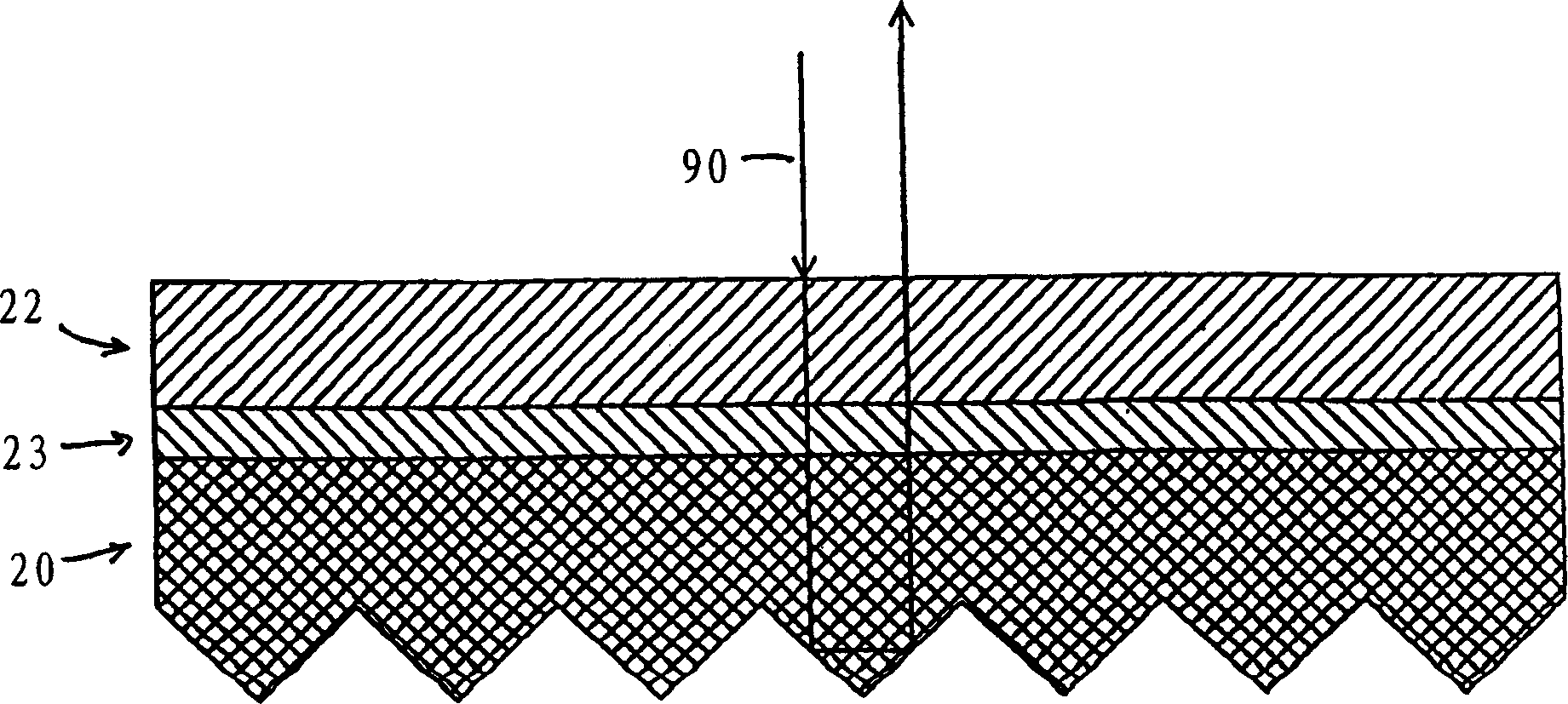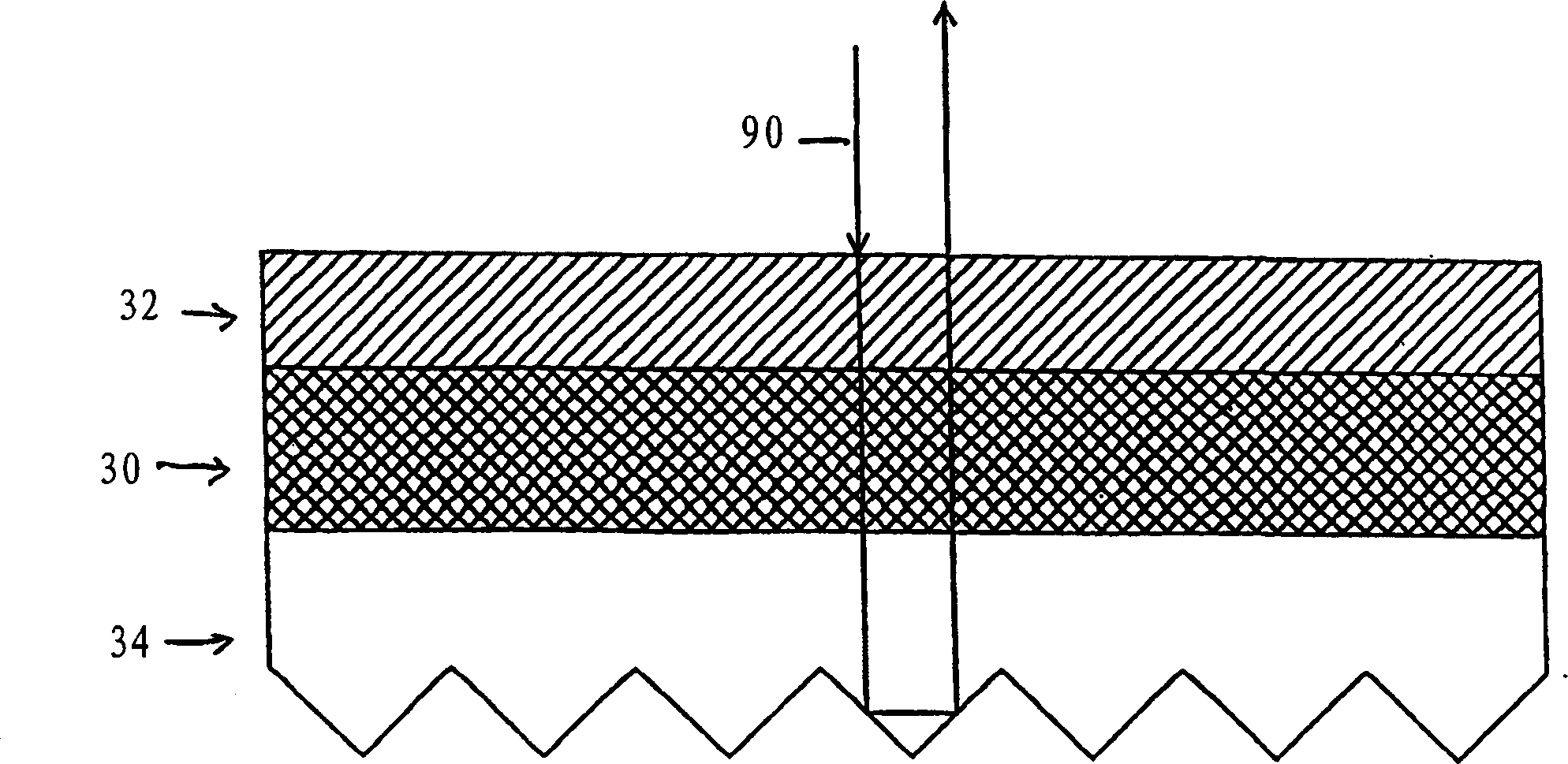Fluorescent polymeric articles having screening layer formed from U.V. light absorbing polymer
A polymer, ultraviolet light technology, applied in synthetic resin layered products, equipment for electrical recording process using charge patterns, layered products, etc., can solve the problem of not considering interaction, etc.
- Summary
- Abstract
- Description
- Claims
- Application Information
AI Technical Summary
Problems solved by technology
Method used
Image
Examples
Embodiment
[0072] The UV light shielding layer used in each of the following examples was an extruded 2 mil polyarylate film. However, it should be understood that the UV light shielding layer may be any transparent film containing a polyarylate or a polymer having a similar molecular structure to the polyarylate, and blends thereof such as polyarylate / polycarbonate co- blends, polyarylate / PET blends, polyarylate / PETG blends, and polymers (and blends thereof) containing the UV absorbing moieties A and / or B defined above. The fluorescent film formula in each embodiment is to use C.W.Brabender Plasti-Corder Prep-Mixer (made by C.W.Brabender Instruments, Inc.of Hackensack, NJ manufacture), by the melt mixing of polymer resin and additive, then use The heated Carver press converts to about 4-6 mil films. The mixing temperature used is in the range of about 230-300°C, depending on the resin. The Brabender speed was 100 rpm and the mixing time used was in the range of about 3-6 minutes. The...
Embodiment l
[0075] This example demonstrates the ability of a polyarylate barrier layer to protect the fluorescence and color durability of a fluorescent polycarbonate layer, with and without UV light protection additives and fluorescent dyes. The polycarbonate resin particles used were Calibre-302 from Dow Chemical Company blended with 0.25% by weight of HALS (Tinuvin 622 from Ciba). In samples 1.2a, 1.2b and 1.4a, 1.4b, the polycarbonate layer also contained 0.3% by weight of Tinuvin 234 (Ciba) UV absorber. The fluorochromes used were Huron Yellow D-417 and Lumofast Yellow 3G (LF-3G), both obtained from Day-Glo Color Corporation, Cleveland, Ohio. In these examples, D-417 and LF-3G were used in the polycarbonate layer at 0.08 and 0.8% by weight, respectively. The polyarylate films used in the barrier layer are commercially available as extruded films sold under the trade designation "Ardel" by Westlake Plastics Company, Lenni, Pennsylvania. The accelerated weathering results are shown ...
Embodiment 2
[0082]This example demonstrates that a polyarylate shield is made from PETG and contains dyes "Hostasol Yellow 3G" (HY-3G) from Clariant, "Lumogen Yellow 083" (LY-083) from BASF, and "Lumogen Yellow 083" (LY-083) from Day - The ability of the fluorescent layer of any of Glo's "Lumofast Yellow 3G" (LF-3G) to impart improved durability of fluorescent properties. The PETG resin used was "Eastar GN-071" from Eastman Chemical, Kingsport, Tennessee. In samples 2.1a, 2.1b the fluorescent layer was a blend of PETG with 0.45% by weight of Hostasol Yellow 3G. In samples 2.2a, 2.2b, the fluorescent layer was a blend of PETG with 0.8 wt% Lumofast Yellow 3G. In samples 2.3a, 2.3b, the fluorescent layer was a blend of PETG with 0.25 wt% Lumogen Yellow083. No photostabilizers or UV absorbing additives were incorporated into the PETG / fluorescent layer. The weathering results are shown in Table 2.
[0083] Table 2
[0084] protected with a polyarylate ("PAL") shield
[0085] ...
PUM
 Login to View More
Login to View More Abstract
Description
Claims
Application Information
 Login to View More
Login to View More - R&D
- Intellectual Property
- Life Sciences
- Materials
- Tech Scout
- Unparalleled Data Quality
- Higher Quality Content
- 60% Fewer Hallucinations
Browse by: Latest US Patents, China's latest patents, Technical Efficacy Thesaurus, Application Domain, Technology Topic, Popular Technical Reports.
© 2025 PatSnap. All rights reserved.Legal|Privacy policy|Modern Slavery Act Transparency Statement|Sitemap|About US| Contact US: help@patsnap.com



